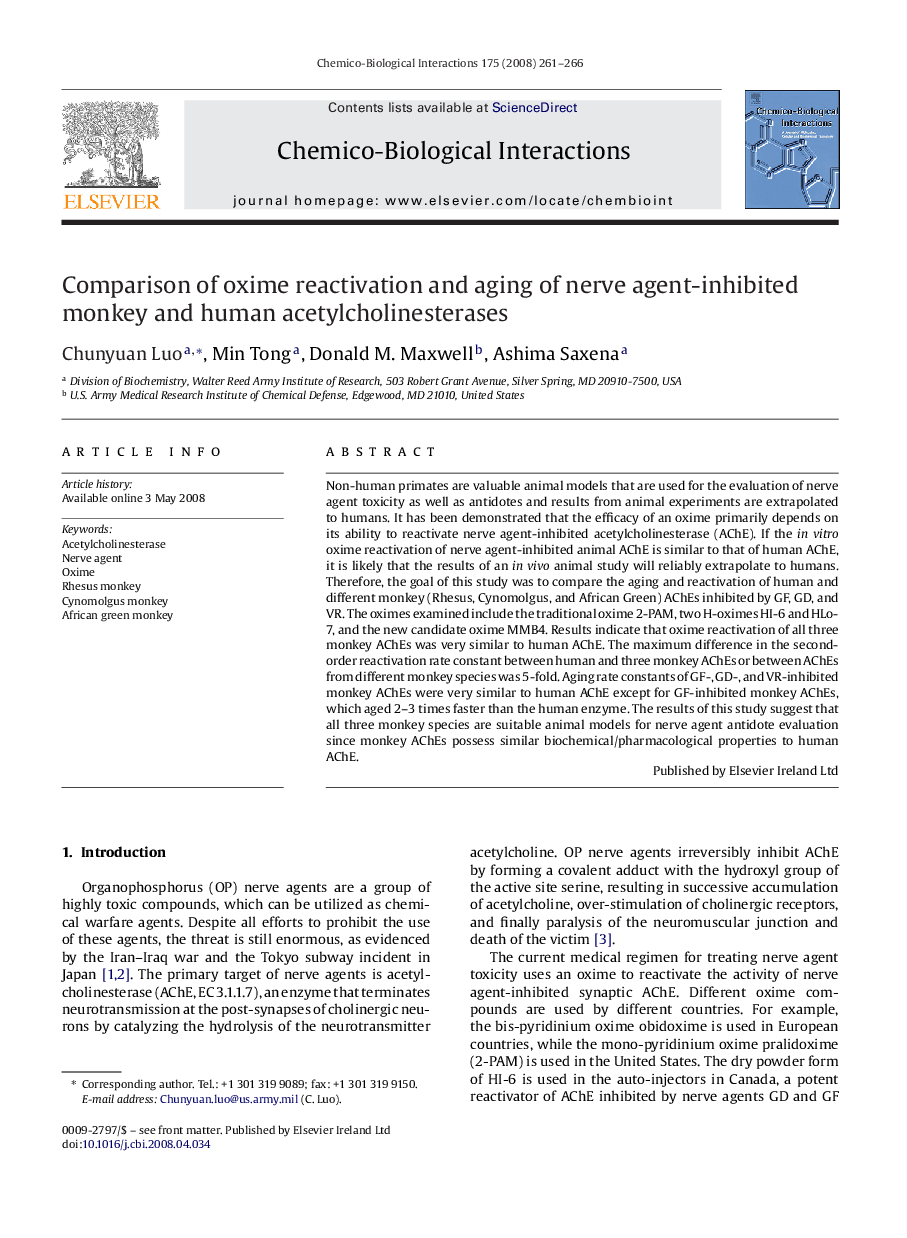| کد مقاله | کد نشریه | سال انتشار | مقاله انگلیسی | نسخه تمام متن |
|---|---|---|---|---|
| 2581596 | 1561653 | 2008 | 6 صفحه PDF | دانلود رایگان |

Non-human primates are valuable animal models that are used for the evaluation of nerve agent toxicity as well as antidotes and results from animal experiments are extrapolated to humans. It has been demonstrated that the efficacy of an oxime primarily depends on its ability to reactivate nerve agent-inhibited acetylcholinesterase (AChE). If the in vitro oxime reactivation of nerve agent-inhibited animal AChE is similar to that of human AChE, it is likely that the results of an in vivo animal study will reliably extrapolate to humans. Therefore, the goal of this study was to compare the aging and reactivation of human and different monkey (Rhesus, Cynomolgus, and African Green) AChEs inhibited by GF, GD, and VR. The oximes examined include the traditional oxime 2-PAM, two H-oximes HI-6 and HLo-7, and the new candidate oxime MMB4. Results indicate that oxime reactivation of all three monkey AChEs was very similar to human AChE. The maximum difference in the second-order reactivation rate constant between human and three monkey AChEs or between AChEs from different monkey species was 5-fold. Aging rate constants of GF-, GD-, and VR-inhibited monkey AChEs were very similar to human AChE except for GF-inhibited monkey AChEs, which aged 2–3 times faster than the human enzyme. The results of this study suggest that all three monkey species are suitable animal models for nerve agent antidote evaluation since monkey AChEs possess similar biochemical/pharmacological properties to human AChE.
Journal: Chemico-Biological Interactions - Volume 175, Issues 1–3, 25 September 2008, Pages 261–266